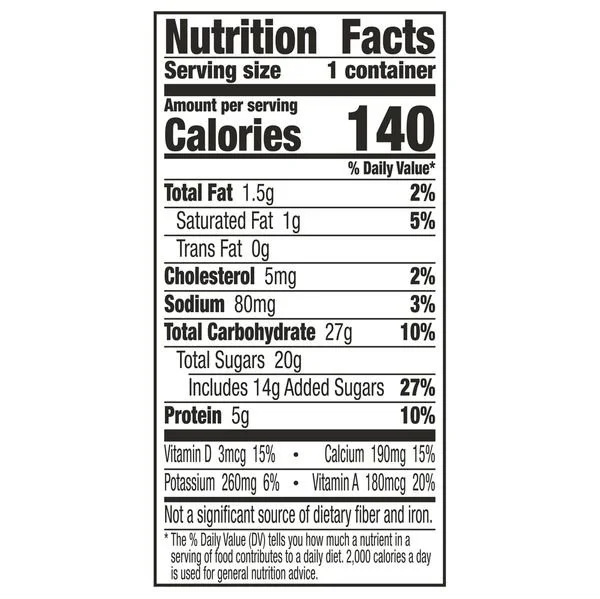Chapter 2, Lesson 1
Buzzwords & Packaging Power
Introduction
Food packaging is designed to grab your attention and trust.
Brands often use words and images that sound healthy but aren’t backed by any legal definitions. Eye-catching buzzwords and clever design tricks can make a product seem healthier than it really is. In this chapter, you’ll learn how to spot these misleading tactics and uncover what the front of the box might be hiding.
What You’ll Learn
By the end of this lesson you’ll be able to:
Recognize common buzzwords used to sell products
Understand how packaging design influences perception
Compare marketing claims with the real nutrition facts
What Are Buzzwords?
Buzzwords often have no real meanings
They make you think that the product is good
What does it mean?
Buzzwords aren’t always regulated, so companies use them freely to build a “health halo.” They sound good, even if the product is full of sugar, salt, or ultra-processed ingredients.
Common buzzwords to watch for:
Natural - The FDA doesn’t have a formal definition for “natural” when it comes to food labels. It generally just means no artificial ingredients or colors were added, but the food can still be heavily processed. (e.g., potato chips)
Clean - “Clean eating” is a popular trend, but “clean” has no regulatory meaning on food packaging. It’s often used to market foods as morally superior.
Wholesome - This word is completely unregulated. A food labeled “wholesome” might still be high in sugar, sodium, or ultra-processed ingredients.
Superfood - “Superfood” is a marketing term, not a scientific one. While many foods marketed this way (like blueberries or chia seeds) do have health benefits, there’s no official list or criteria.
Made with real fruit - Often means fruit juice concentrate or fruit purée, which lack the fiber and nutrients of whole fruit.
Plant-based - “Plant-based” foods can still be highly processed and contain added sugars, salt, or unhealthy fats.
Multigrain - “Multigrain” just means more than one type of grain—it doesn’t tell you if they’re whole or refined. Many multigrain products are mostly white flour.
Light / Fit / Guilt-free - “Light” can legally refer to reduced fat or calories—but it varies by product. “Fit” and “guilt-free” aren’t regulated at all.
Why it matters:
Many of these words have no legal definition
You might assume a product is healthy without checking the label
Products with buzzwords often cost more even if they’re not better for you
Buzzwords can lead to “health washing” (marketing that disguises unhealthy products)
What Words Can You Trust?
These terms are backed by real rules from the FDA or USDA. That means that they actually have to meet specific requirements.
Examples:
Low Sodium - 140mg or less of sodium per serving
Reduced Sodium - At least 25% less sodium than the original
High Fiber - At least 5g of fiber per serving
Low Fat - 3g or less of total fat per serving
Good Source of [X] - 10–19% of your Daily Value (DV) for that nutrient
Excellent/High Source of [X] - 20% or more of your Daily Value for that nutrient
Calorie-Free - Fewer than 5 calories per serving
Sugar-Free - Less than 0.5g of sugars per serving
Organic - Must follow USDA organic farming and processing rules
These terms must meet strict regulations so they actually mean something. But watch out: just because something is low in one thing, doesn’t mean it’s healthy overall. Always check the Nutrition Facts label and ingredients list to see the full picture.
Packaging Design Tricks
Don’t judge a product by its packaging.
What does it mean?
Brands know that design influences decisions. Everything from colors to fonts to layout can create a “health halo” effect, making a product seem healthier than it actually is.
Common Tricks to Watch For:
Green = Healthy (Not Always)
Bright greens, browns, and earth tones are used to signal natural or organic, even when the product is full of sugar or additives.
Fresh Imagery
Pictures of fruit, grains, or farm scenes make you feel like it’s healthy, but they don’t always reflect what’s inside.
Health Symbols or Icons
Leaves, hearts, or fake “check marks” on packaging suggest health benefits… even if the product doesn’t deliver.
Large Numbers + Vague Benefits
“Packed with 16 vitamins!” — Sure, but how much of each? It sounds impressive, but may be minimal.
Why it Matters:
Design plays on emotion, not facts. It nudges you to trust the product before reading the label. That’s why it’s so important to check the ingredients and Nutrition Facts.
Example:
Design Element: Fruit-heavy imagery and health claims.
Reality: Over 18g sugar per 6 oz — more than some desserts.
Why It Works: Yogurt is associated with probiotics and health, even when sugar-packed.


